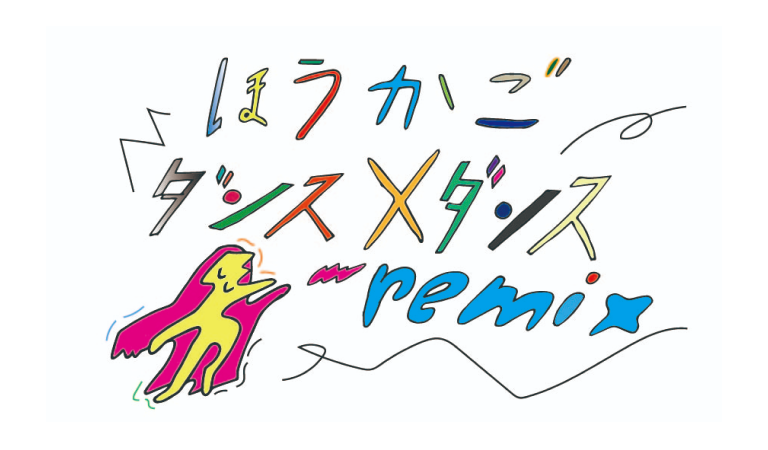ADD Hinode Town
Document of the Research and Workshops
Remon Nakanishi and Daisuke Muto
Research
Located in the Tama district of western Tokyo, Hinode Town is rich in nature. Through ADD advisor Miki Sato's relative who lives there, we were able to meet with a number of people involved in various dances.
Hinode Town is a place where many traditional folk performing arts survive, and we had the pleasure of greeting people at a meeting of the Hinode Town Folk Performing Arts Preservation Society, and observing the occasional events and rehearsals.
Houou-no-Mai (Phoenix Dance), a nationally designated Important Intangible Folk Cultural Property, is usually dedicated at the annual festival of Kasuga Shrine in September. It is a unique performing art consisting of Yakko-no-Mai, in which children perform a series of kabuki-style speeches, and Houou-no-Mai, in which adults dance in circles around a drum.
In recent years, five musical ensembles from the area of the former Hirai Village come together at the annual festival of Kasuga Shrine, called the Hirai Festival, to compete with each other in a five-piece performance of music (flute, drum, and gong) and dance. The five ensembles each have their own unique characteristics. Among them, the Shimo-cho Hayashi, with its strong ties within the community, strives to faithfully carry on the music that has been performed since the Meiji period (1868-1912) and to devise ways to present it. On the other hand, the relatively new Sakuragi Bayashi is willing to accept new immigrants regardless of which district they reside in.
While many children in Hinode Town are involved in local performing arts, there are also opportunities for them to experience other types of dance. The Town's Shimo-cho Children's Center, the base of the ADD Hinode Town, has a hula class as a club activity, and we often come across children learning hip hop as well. There is a street dance school called MUSKY, and the Town's youth committee also sponsors a hip hop dance class for elementary school students. In July, an event called Let's Dance Dance is held at the Aeon Mall to present the participants' achievements. MUSKY and high school dance clubs from neighboring areas also participate in this event, which attracts a lot of attention every year.
Thus, Hinode Town, where many of the time-honored folk performing arts remain, is also a hub for hip hop culture.

Houou-no-Mai parades across the town and arrives at Kasuga Shrine. A seasonal rite that hints at the visit of autumn.

The lobby of the Aeon Mall Hinode is a stage for children to demonstrate their dance.
Workshop
It was Chiori Komine, a staff of the Shimo-cho Children's Center, that showed great interest in the project initially, and Kimio Komori, who is in charge of the Center at the Town's Child Care and Welfare Department, provided us with great support.
Children gather at the Center after school to play ball games in the front yard, read books in the library, or play table tennis in the playroom. As the ADD researcher, Remon Nakanishi often visited here to play with the children (or be played by them), Before long, he became a familiar face among them, being called out on the street, "Remon! Remon!"
The ADD workshop, "Hôkago Dance Class", was held mainly in the playroom of the Children's Center, but also on the second floor of the building (Shimo-cho Hall) and at the Town's Yamabiko Hall when necessary.
The series of workshops started off with a bang with the first appearance of Koharu Sugawara. Guided by Koharu, the children's spirits soared as they danced to the music. By emphasizing the importance of "becoming one with the music" rather than the formalities, the children had a fresh taste of moving freely according to their own senses without being bound by rules. At a moment Koharu asked, "Who would like to dance by yourself?" Then the youngest, a five-year-old girl, responded to the call, and danced solo in the spacious Yamabiko Hall.
Kazuko Lokelani, who regularly teaches hula at this Children's Center, taught them the basic steps and how to use hands to express various shapes and sceneries. We also got a glimpse of the Hawaiian culture scene in Hinode Town, as she works with a local Hawaiian band called Blue Paradise.
The members of the Houou-no-Mai Preservation Society taught Yakko-no-mai, which is usually shared only by boys, to the girls as well, specially for this workshop. A workshop participant who is also a member of the Preservation Society stood as a role model for the other children, and they all learned how to move forward step by step using fans and sticks. For the Tamanouchi Shishimai Preservation Society's class, Remon Nakanishi had prepared practice drums for each of the children to play as they danced, strapped to their abdomen. The children were even more absorbed in the practice now that they had the gear. The members of the Sakuragi Bayashi Preservation Society usually teach beginner children, and their clear and speedy explanations were impressive. In a short time, the children had learned the entire hyottoko (clown) dance. The members of the Shimo-cho Hayashi Preservation Society taught them the dance with authentic musical accompaniment, and brothers from the Society who were among the workshop participants played a part in teaching. It seemed to be a fresh experience for them and for the others who learned from them.
FUUMIN from MUSKY Dance Studio taught them the basics of street dance, meanwhile Kazuko Hasegawa, who is teaching ballet, taught them basic posture and walking. After the class, some of the students said they would like to start learning ballet.
In the contemporary dance session by ADD advisor Miki Sato, the children were given the opportunity to create their own movements without a set pattern. Researcher Remon Nakanishi also enjoyed a work with the children on reconstructing an old bon dance from a choreography book, along with guest artist Nyantoko. In general, there was a high level of interest among the children, and a large portion of the children participated in the program consecutively.

The basics of hula by Lokelani Kazuko. Relaxed movements and gestural language.
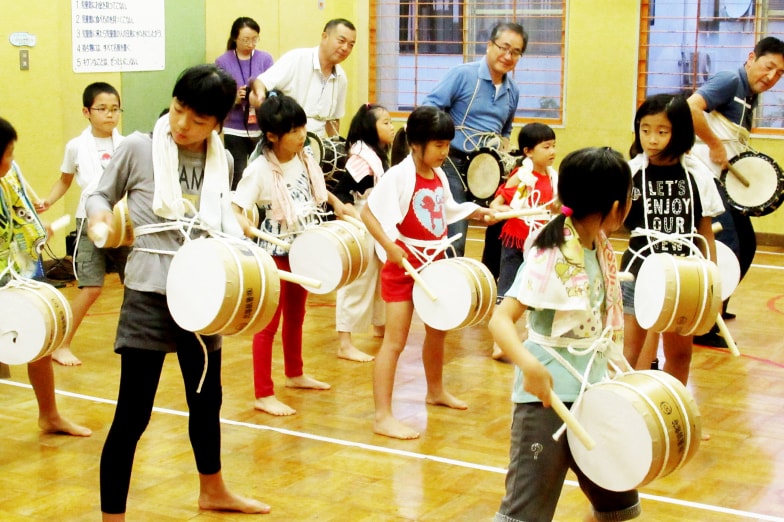
In Tamanouchi Shishimai, you move while drumming. It allows you to dance loud.
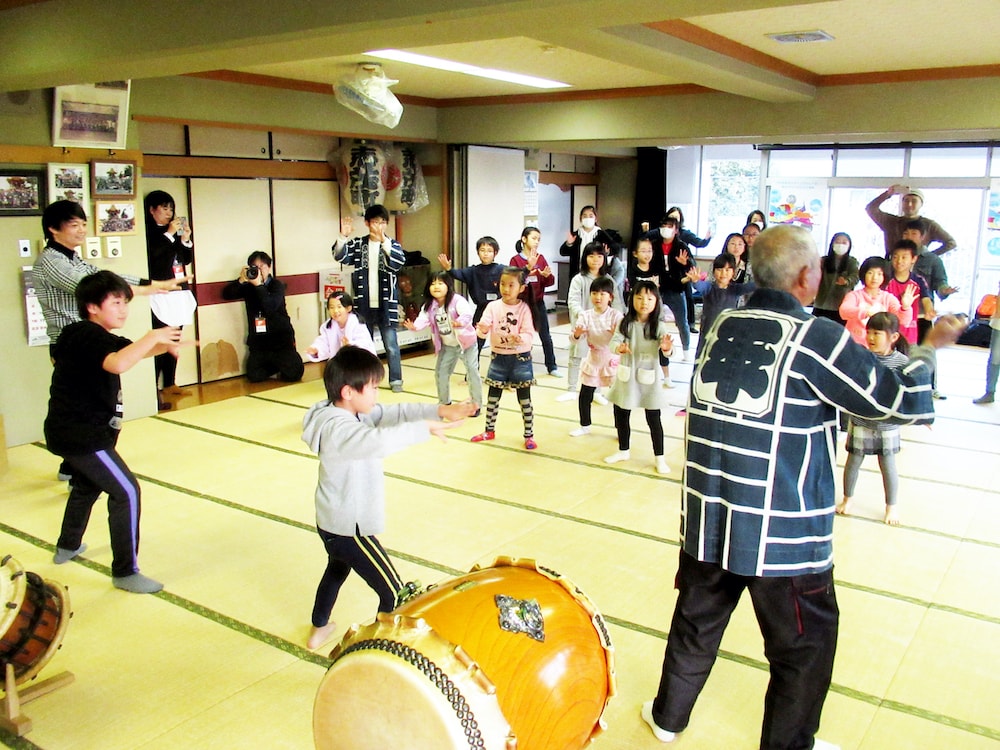
Shimo-cho Hayashi holds the authentic form. A lavish lesson with members

As soon as she begins, Koharu Sugawara instantly relieves the tension of the children. The music lifts their spirits and leads them to the joy of full-body movement in a wild, dynamic way.
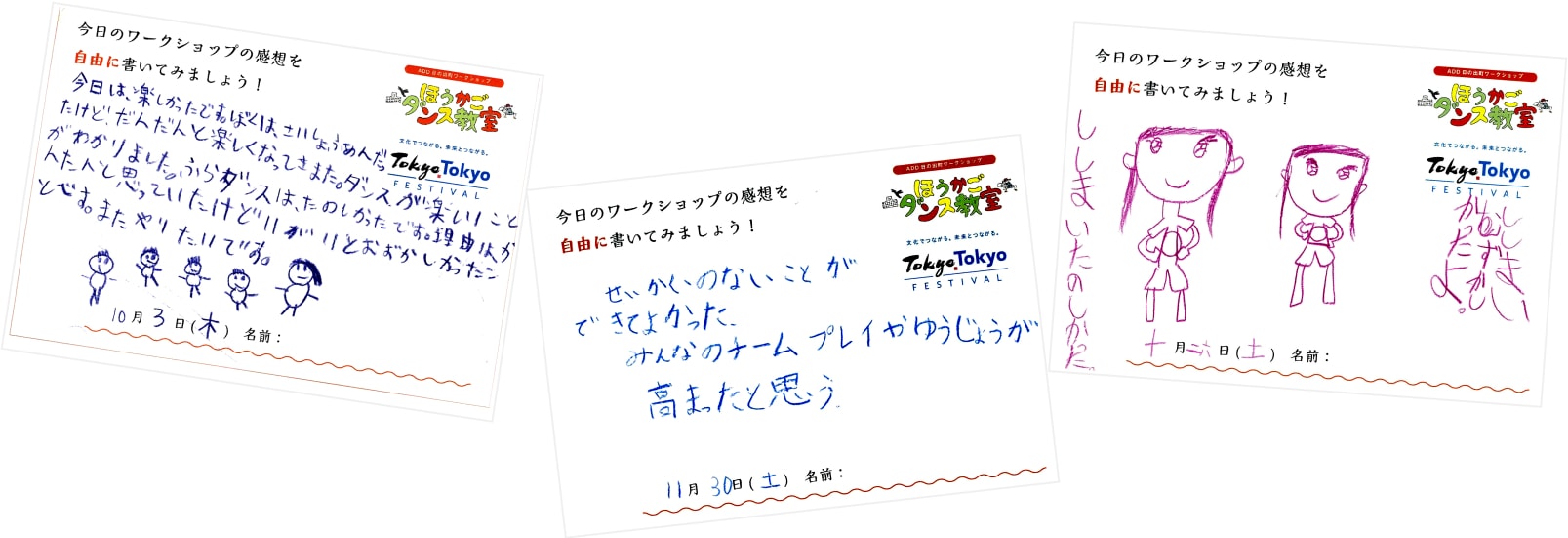
Feedbacks from the children after the workshop.
Workshop (Resumed)
When all the workshops were finished and the members to participate in the dance creation phase had just been confirmed, the program was interrupted due to the COVID-19. After a year and three months of inactivity, we resumed online (some members were unable to continue due to various reasons, while those who had moved to Okinawa were able to participate thanks to the online system). A total of 15 children took on the challenge of creating their own choreography.
Connected via ZOOM between the studio in Tokyo and each individual home, Koharu Sugawara, her assistant Rio Takanaka, and Remon Nakanishi led a three-day workshop. First, the participants were asked to recall the dances they had learned in the earlier workshops, and encouraged to bring in three motifs of their own movements, picked from what they learned in ADD or they found in their daily life, as materials for their original dance.
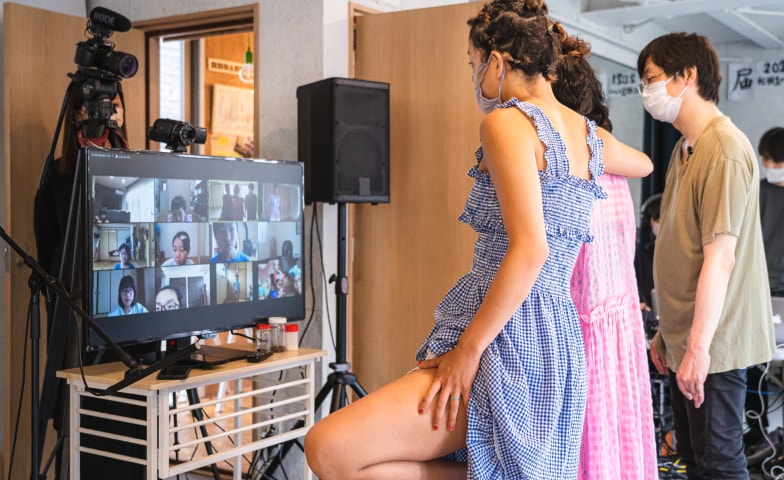
A reunion with the kids, all of whom had grown up a lot in the past 15 months.
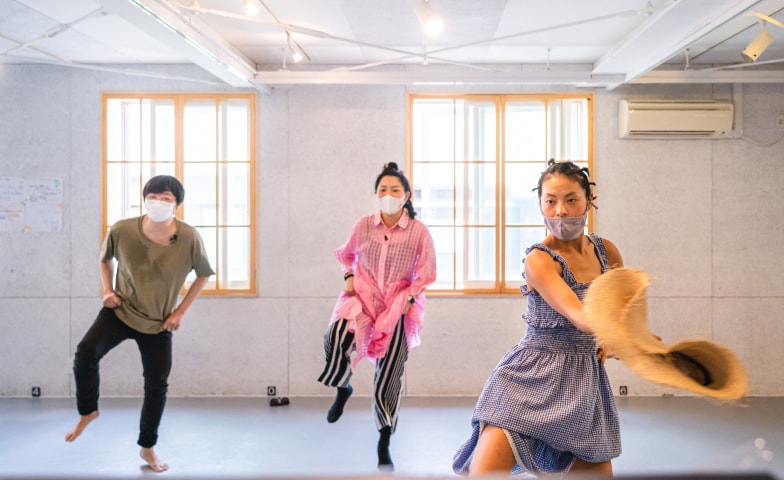
While Koharu boldly arranges the raw moves, Rio deftly links them with music.
Showing
Rio took the lead in organizing the motifs from the children into dance phrases, which she and Koharu connected to the music. The music was an original sound source recorded in Hinode Town and remixed by the musician Masafumi Saito based on the performances of Shimo-cho Hayashi, Houou-no-Mai, and Blue Paradise.
With the help of reviewing the recorded video, we were able to complete the five-minute choreography, which included some hula and Houou-no-Mai movements, and we were all able to dance through it from start to finish, albeit through the ZOOM screen.
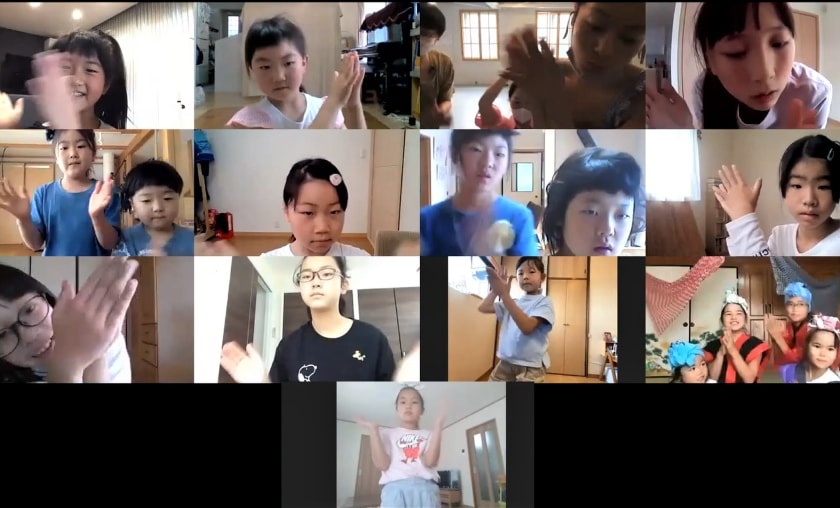
The event was a great success with unique children. A new piece was born to be performed on stage someday.
